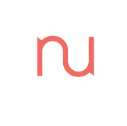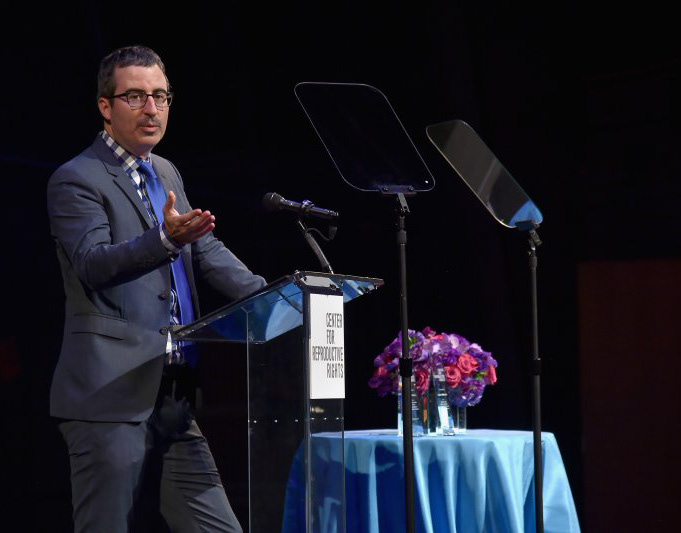PROBLEM:
A true traveler is always searching for an authentic, unique travel experience yet something that suits their specific criteria. However, to get this information, a simple Google search would result in a sea of information, some of which might be curated by a person, but most of it is simply a lot of commercial jargon that is trying to sell a deal, a package or an itinerary.
How can travelers find authentic stories and learn from experiences of other travelers?
IDENTIFYING USERS, THEIR BEHAVIOR AND PAINT POINTS:
The first step was to identify the users - Who needs this app? What are they looking for? Where are they finding this information now? And what are their pain points?
Based on research, the users are:
•Travelers, not tourists seeking off-the-beaten path travel experiences (Creative, Originalists)
•In need for customized travel experiences based on specific criteria such as time of the year, budget and holiday type.
•Information and Adventure Seekers
•Self-starters, Entrepreneurial and trail-blazers
•In need for customized travel experiences based on specific criteria such as time of the year, budget and holiday type.
•Information and Adventure Seekers
•Self-starters, Entrepreneurial and trail-blazers
Where are my users currently finding their inspiration?
•Guides by Lonely Planet (beautiful photos and unique travel recommendations)
•Trip Advisor (huge and active community of global travelers)
•Trip Advisor (huge and active community of global travelers)
User Behavior & Pain Points:
•Most users found their travel inspiration from other travelers' experiences found on social media.
•Users needed more personalized travel recommendations (family configuration, Time to travel, Budget etc.).
•Users thought travel blogs/social media write ups by real people give more authentic and relatable information.
•Lonely planet is a travel blog but showcases experiences of travel 'experts' rather than other relatable travelers.
•Trip Advisor had a great community and feedback system, but their is a lot of 'commercial' propaganda.
•Users needed more personalized travel recommendations (family configuration, Time to travel, Budget etc.).
•Users thought travel blogs/social media write ups by real people give more authentic and relatable information.
•Lonely planet is a travel blog but showcases experiences of travel 'experts' rather than other relatable travelers.
•Trip Advisor had a great community and feedback system, but their is a lot of 'commercial' propaganda.
IDEA, STRATEGY, PAPER PROTOTYPE AND USER TESTING
Solution:
OnBoard is a fully crowd-sourced travel search engine that finds travel blogs/content curated by real people based on a specific search criteria entered by the user. It automatically filters out content with commercial interests and targeted advertising. This app streamlines the process of finding specific travel info that is curated by real people, as opposed to travel agencies, hotels and other travel stakeholders. This app helps travelers (not tourists) who are seeking inspiration from the experiences of other travelers, are in need of customized travel recommendations, information seekers, and those who like to plan their travel independently and creatively.
What are the goals of this app?
•Searches for and provides relevant and real stories curated by real travelers minus commercial jargon.
•An information sharing platform for and by a community of global travelers.
•Allows the user to easily create and share their own travel blog (words & media) freely accessible to other users.
•An information sharing platform for and by a community of global travelers.
•Allows the user to easily create and share their own travel blog (words & media) freely accessible to other users.
How can the app be made profitable?
In-app purchases can be incorporated by tie-ups with travel service providers mentioned within the travel blogs. So while the information will always be free, users can choose to purchase travel services within the app.
What are the app's primary functions?
•A search engine that finds & presents relevant content curated by real people (blogs, galleries, recommendations etc.) using user entered criteria as keywords.
•A platform that allows one to interact directly with an educated, experienced and a global travel community.
•A platform to create and curate one's own travel blog that in turn acts as results for search queries run by other users.
•A platform to share one's own travel experiences with friends and networks through social media integration.
User Flow and Site Map
Paper Prototype Testing
MAKING IS REAL (SORT OF..)
The paper prototype was tested to validate the app structure and user flow. Based on findings, a low fidelity interactive wireframe was created to test user's interaction with the app's functionality.

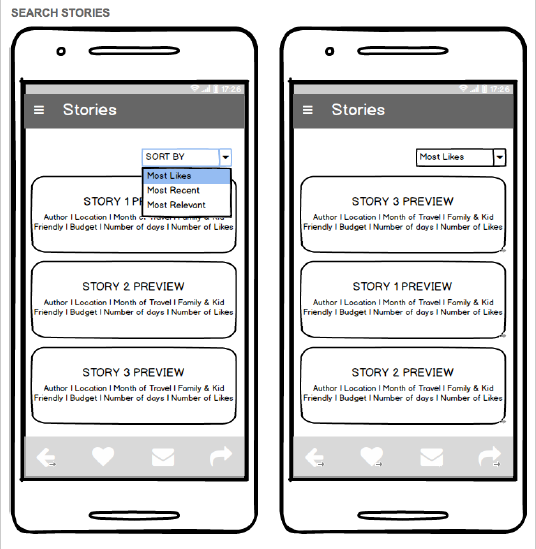
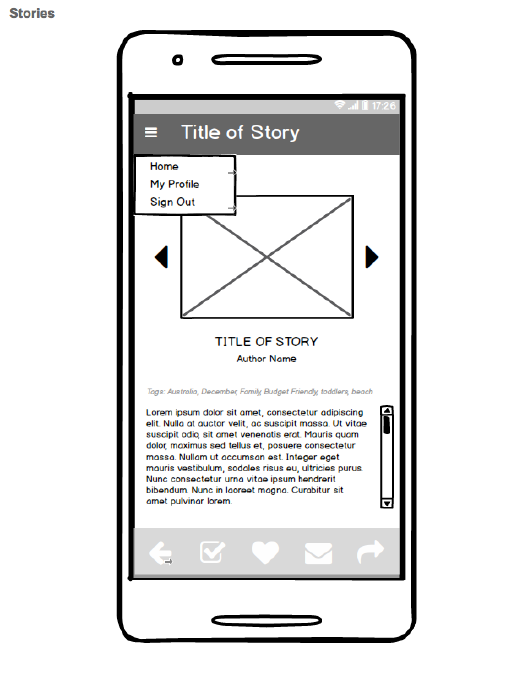

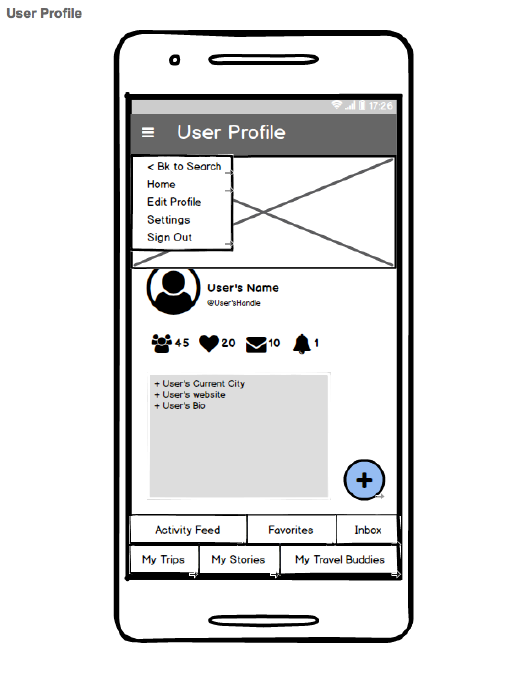
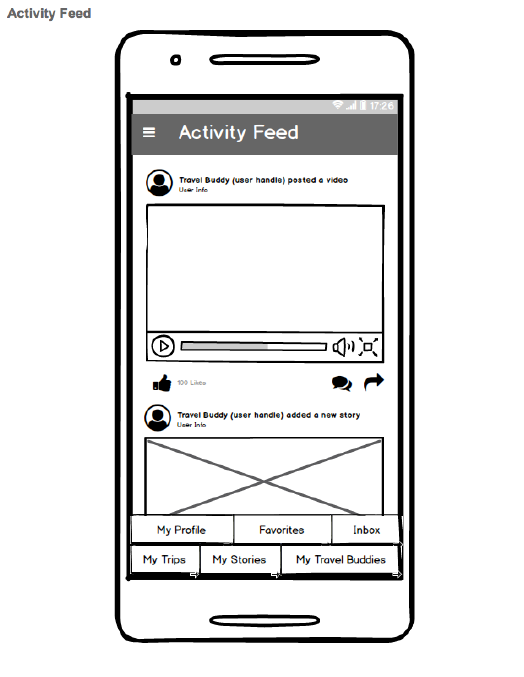
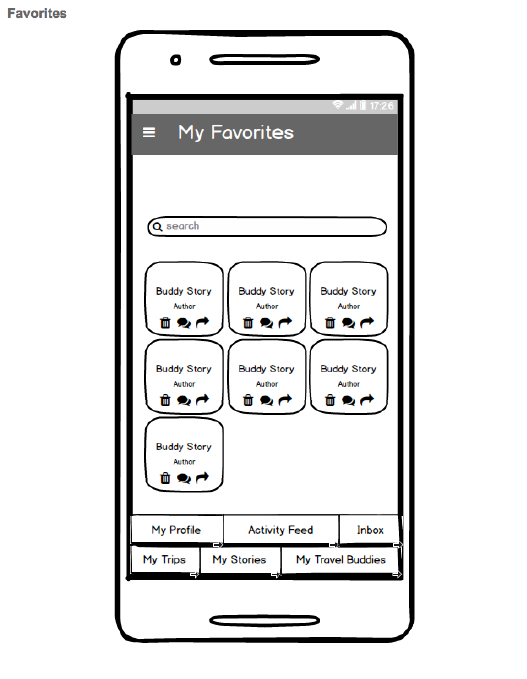
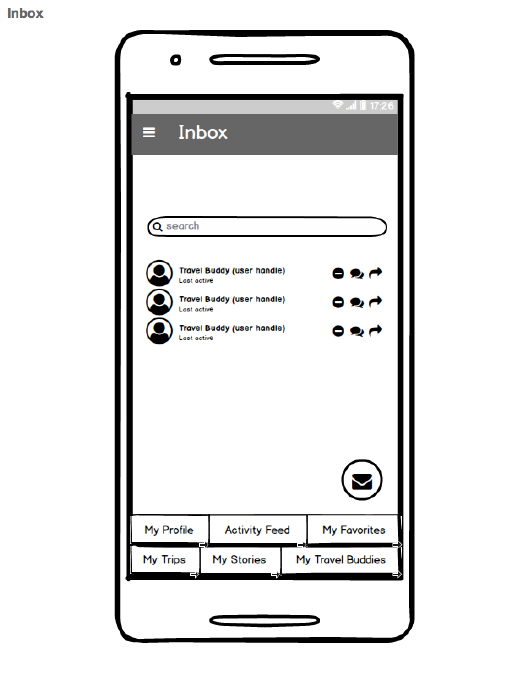
REALLY, MAKING IT REAL
The next step was to create a look and feel for the app to incorporate in a high fidelity functioning prototype.
A mood board, basic guideline for colors, fonts and the brand identity was designed.
A mood board, basic guideline for colors, fonts and the brand identity was designed.
DESIGNING THE INTERFACE
Based on the 4 core functions of the app, colors were used as differentiators to make the user aware of his position and function within the app. Click here to view an interactive prototype >
